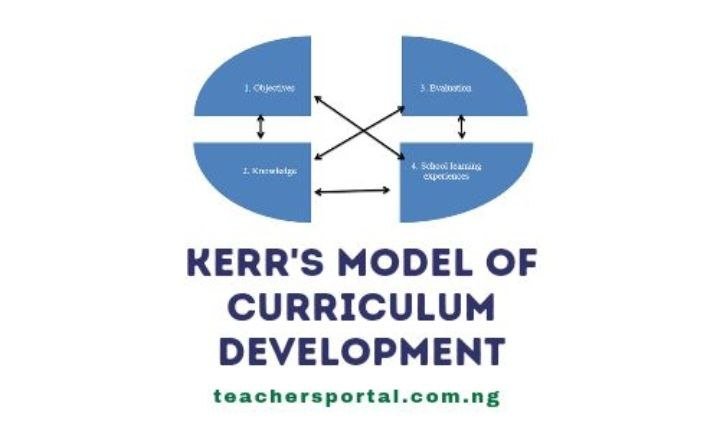Kerr’s model of curriculum development, introduced in 1972, represents an advancement over Tyler’s earlier model. It acknowledges that evolving concepts, knowledge, and teaching methods continually shape the curriculum and its development. Notable contributions like Shulman’s Pedagogical Content Knowledge (PCK) in 1986 and van den Akker’s Levels of the Curriculum in 2004 have significantly impacted curriculum development.
Kerr’s model is marked by its flexibility and adaptability, focusing on the creation of educational curricula. It consists of various stages, with a strong emphasis on catering to the diverse needs of students. This model offers a systematic and comprehensive approach to curriculum development, ensuring that all crucial aspects are taken into account. In essence, Kerr’s model provides a dynamic framework that recognizes the evolving nature of education and seeks to create curricula that align with the changing educational landscape.
Kerr’s curriculum model represents a significant improvement over Tyler’s. It distinguishes itself by beginning with the specification of objectives, followed by evaluation, knowledge, and learning experiences, in that specific order. Unlike Tyler’s linear approach, Kerr’s model emphasizes interactive relationships among these elements. It highlights the importance of cross-checking to ensure alignment with the original intentions and procedures.
Kerr’s model not only showcases the dynamic interactions within the curriculum components but also offers insights into reliable sources of data for these crucial elements. It deviates from Tyler’s approach by advocating for ongoing evaluation throughout the curriculum development process. Kerr underscores the interactive nature of his model, suggesting that one can enter the cycle of interrelated parts at any point rather than strictly following a linear sequence.
However, despite Kerr’s apparent advantages over Tyler’s model, it’s essential to acknowledge that Kerr’s model is not a panacea. Some critical issues may have been overlooked or treated lightly. One reason for these weaknesses could be that unrealistic expectations are sometimes placed on Kerr’s model. It’s important to remember that Kerr’s format for curriculum development is intended as a model, nothing more or less, and not a comprehensive solution to all curriculum-related challenges.
Kerr’s Model and Evaluation
Kerr’s model of curriculum development addresses the issue of evaluation differently from Tyler’s model. In Kerr’s model, evaluation is not limited to the end of the program; it appears as the second activity following the formulation of objectives. Kerr emphasizes that evaluation is inseparable from the objectives, as it ensures the attainability of the proposed objectives. However, it’s not entirely clear whether Kerr’s model prioritizes the evaluation of objectives over other components, and this discrepancy between his description and the diagrammatic representation of the model may arise from his attempt to make the model operationally specific.
Kerr’s model introduces various evaluation instruments, including objective-type and essay-type tests, attitude scales, interest inventories, interviews, multiple assessments, group observation methods, and survey techniques. These instruments are meant to provide a sound basis for curriculum evaluation decisions, focusing on evidence of teaching effectiveness. Notably, there is no direct mention of the role teachers play in the evaluation process, which could be considered a limitation.
While Kerr’s model may be theoretically well-founded, the critique suggests that practical considerations might not have had a significant influence on its development. Ideally, both theory and practice should work in harmony in curriculum development, as noted by Kelly in 1983.
Weaknesses of Kerr’s Curriculum Development Model
Kerr’s model of curriculum development is indeed flexible and systematic, with a focus on student needs. It encompasses the planning, formulation, and implementation stages. However, it exhibits some weaknesses.
Firstly, the model lacks a strong emphasis on assessment or evaluation, which is a critical component of curriculum development. This omission can hinder the ability to measure the curriculum’s effectiveness and make necessary improvements.
Secondly, the model doesn’t prioritize teacher input or collaboration, which is essential for ensuring that educators are fully engaged and committed to the curriculum. Without teacher buy-in and input, the curriculum’s effectiveness may be compromised, and it may not address the practical needs of the classroom.
Kerr’s model does not provide clear answers to these crucial questions about curriculum objectives, leaving room for further exploration and refinement in this area.
